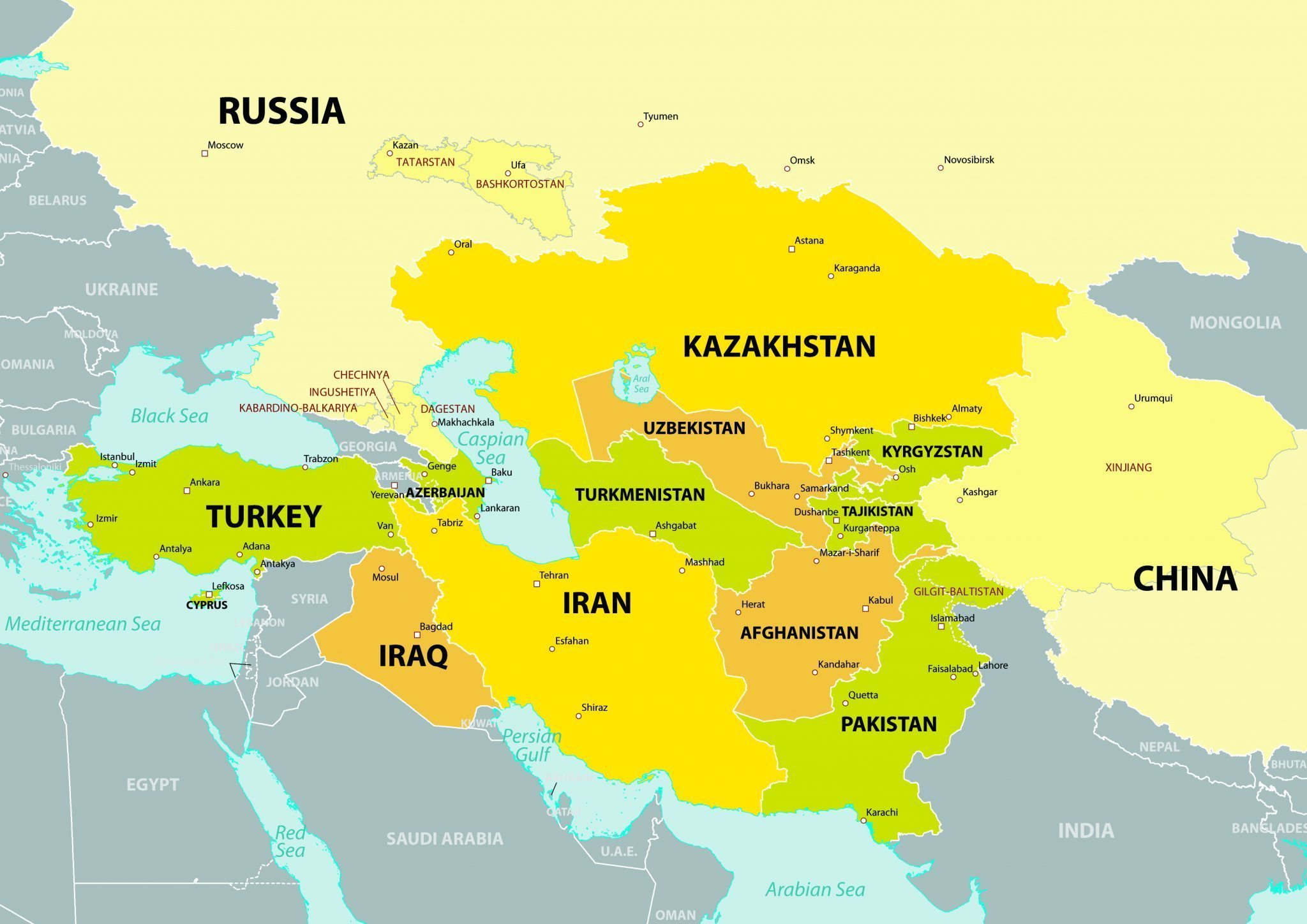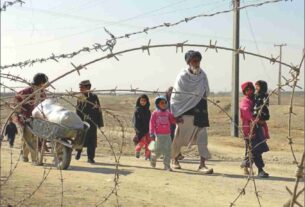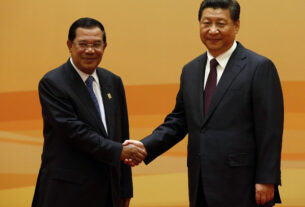Chinese foreign policy towards Central Asia
China has endeavored to build and strengthen its relations with the five Central Asian states of Kazakhstan, Kyrgyzstan, Tajikistan, Turkmenistan, and Uzbekistan. While originally the main focus of its political and diplomatic activities was to settle the Soviet legacy of disputed borders, its ties with Central Asia later started to reflect a growing desire to protect broader economic and security interests in the region.
Today, a substantial network of roads, railways, air flights, communication, and oil and gas pipelines connects China to Central Asia.
Just few years ago, carrying out almost $46 billion of trade with the region’s five states, China was the most prominent economic actor and main source of foreign investment in the region but today Beijing has increased its trade prospects to 124 billion USD.
Since China forged diplomatic relations with the five Central Asian states in 1992, its overall trade with the region has increased 100-fold.
Huge financing and foreign direct investment in energy, natural resource extraction, and commodities, such as the Central Asia gas pipeline from Turkmenistan to China, the Atyrau-Alashankou oil pipeline from Kazakhstan to China, significant investments in energy transport and communication in Uzbekistan, the construction of new roads and tunnels in Tajikistan, and the expansion of road connections between Kyrgyzstan and China have generated many headlines.
The supply of low-interest loans to credit-deficient central Asian countries such as Tajikistan has also been a very noticeable feature.
In June 2012, former President Hu Jintao announced that Beijing would offer $10bn in loans to the member states of the Shanghai Cooperation Organisation (SCO).
Central Asia also represents a growing market for China’s goods. In addition to a much deeper economic engagement, the region has also experienced an increase in political, diplomatic, and cultural ties with China.
All five countries in the region have signed strategic agreements with China. High-level visits by Chinese officials have intensified.
Confucius Institutes, which offer language courses and cultural programmes, are now present in Kazakhstan, Uzbekistan, Kyrgyzstan, and Tajikistan.
The SCO Network University was launched in 2010 as a new platform for cooperation in education and people-to-people exchanges.
For the five Central Asian nations, China’s increased engagement presents many opportunities, but also challenges, at a critical juncture in the region’s history.
While China’s presence is received with varying degrees of acceptance, tolerance, or mistrust among civil society, its engagement has been welcomed by the political elites of the region for the opportunities it creates to fuel economic growth and for putting the local governments in a better negotiation position vis-à-vis the old dominant power, Russia, as well as Western states.
While China’s economic footprint in the region continues to expand, key questions remain concerning China’s main interests here and the future of its engagement. What lies at the forefront of China-Central Asia relations? Is there a grand strategy for Central Asia on the part of China? Is China really intent on reorienting Central Asia towards Beijing and away from the world’s other major powers?
Chinese foreign policy is still informed, at least in the official discourse, by the 1954 Five Principles of Peaceful Coexistence: respect for territorial integrity and sovereignty, non-aggression, non-interference in each other’s internal affairs, equality and mutual benefit, and peaceful coexistence.
Chinese officials emphasise that foreign policy questions in Central Asia, as well as in other regions around the world, derive from the Five Principles.
They portray China as a developing country which is not part of any power bloc such as that around the United States, and which through the Five Principles pursues the road of peaceful development.
Emphasis is placed on China never seeking hegemony, or wanting to impose its will on other countries. By solemnly declaring to the world never to seek hegemony, China tells its smaller Central Asian neighbours and the world at large that its rapid economic development and the strengthening of its military capability not only will not be a threat but also offer opportunities to its neighbours and partners in what could be described as a ‘win-win situation’.
The Chinese policy discourse often stresses the distinctiveness of China’s approach as a responsible great power (fu zeren de daguo) that respects other countries’ sovereignty, in contrast to what are perceived as Western powers’ efforts to interfere in other countries’ social systems, development paths, and internal and external policies.
China’s alternative world model emphasises instead multipolarity and equal treatment of all countries “no matter they are big or small, strong or weak, rich or poor”.
Each national government alone, acting on the basis of its own national conditions, has the right and ability to properly handle matters related to domestic, political, economic, or social affairs, including internal conflict. Such a view on the conduct of international relations is clearly informed by China’s own history and its sensitivity on issues such as Taiwan, Tibet, and Xinjiang.
China’s position on most disputes around the world is that they should be solved by mutual understanding, sincere dialogue, and peaceful negotiation, and it opposes interference from the outside.
This has been China’s view and approach on resolving its border issues with Central Asian countries, as well as on major international crises and hotspot regions, including the war between Iran and Iraq, the struggle between Israel and the Arabs, the rivalry between North and South Korea, the conflicts in the former Yugoslavia, and the most recent upheavals in the Middle East, including the current Syrian conflict.
Therefore the core idea behind the Five Principles as interpreted by China today is sovereignty – that one state has no right to interfere in the internal affairs of another state.
However, as one Chinese scholar put it, “principles must be understood in the context of reality.” The reality is that the balance of protecting China’s interests overseas while maintaining a steadfast commitment to the principles of state sovereignty and noninterference will become ever more precarious.
As Chinese officials and scholars are becoming more aware of the tensions between the principle of non-interference and China’s responsibilities as a global power and have started to realise that “attempts to separate politics and business do not generally succeed”, China has become more flexible in its interpretation of non-interference and has been willing to take a more active diplomatic role in the resolution of conflicts, for example the role that it has played in Sudan and South Sudan over the past two years.
When voting at the UN on sanctions or interventions aimed at resolving or dealing with major international crises, instead of using its veto power, China often abstains because as a permanent Security Council member China’s negative vote would constitute a veto, angering countries who favor intervention.
By not voting or casting an abstention, China has allowed several interventions to go ahead without reversing its commitment to nonintervention.
While security and development are the main issues confronting Central Asia, it is interesting to see how security and development are interpreted by China.
On the one hand, in order to develop properly a country needs a peaceful and stable internal and external environment because nothing could be achieved without a peaceful and stable environment.
On the other hand, security is often seen from the prism of development: underdevelopment generates insecurity and instability and is a root cause of conflict, or in other words, investing in development offers the best guarantee for promoting security.
The security-development nexus was initially based on China’s national experience and later translated into foreign policy, in particular through the promulgation by former President Hu of ‘the harmonious society’ concept where development and security are closely linked.
The implications and conclusions to be drawn for dealing with political and ethnic tensions in the Xinjiang Uyghur Autonomous Region, or indeed other conflicts across the broader Central Asia region, are quite clear: economic development has the power to attenuate, or even eliminate, political and ethnic tensions.
Central Asia does not lie at the forefront of China’s main international, economic, and security concerns. Traditionally, and even more so in recent years, China’s assertive proclamations and actions have focused on more fundamental zones of interests, in particular the relationship with the United States, Sino-Japanese relations, cross-strait relations with Taiwan, tensions in the Korean peninsula, and relations with India.
China’s strategy towards Central Asia “may be a reflection of China’s larger strategy toward the external world, which involves a lot of natural resources coming in and a lot of trade going out.”
However, the lack of a grand design does not mean that Chinese foreign policy in Central Asia is not realistic or strategic or that it lacks any geopolitical connotation. There is a range of pragmatic issues and interests involved in China-Central Asia relations.
Scholars and analysts studying China’s engagement in Central Asia do not always concur on what is the main driver, in particular whether economic issues, especially natural resource extraction, or internal security issues, that is, the Xinjiang question, are the main priority.
What is clear is that both sets of interests have a direct relationship to China’s domestic issues and that they are interconnected.
After three decades of very high growth rates, urbanisation, and a breathtaking social transformation – and with only one per cent of the world’s oil reserves for the second largest consumption – China needs to secure sustainable energy supply sources from elsewhere.
Countries in Central Asia, especially those with large hydrocarbon reserves and mineral deposits, have become for China premier investment destinations, given their geographic proximity and the opportunity they also offer to secure continental energy supplies, thus reducing Beijing’s dependence on maritime routes.




